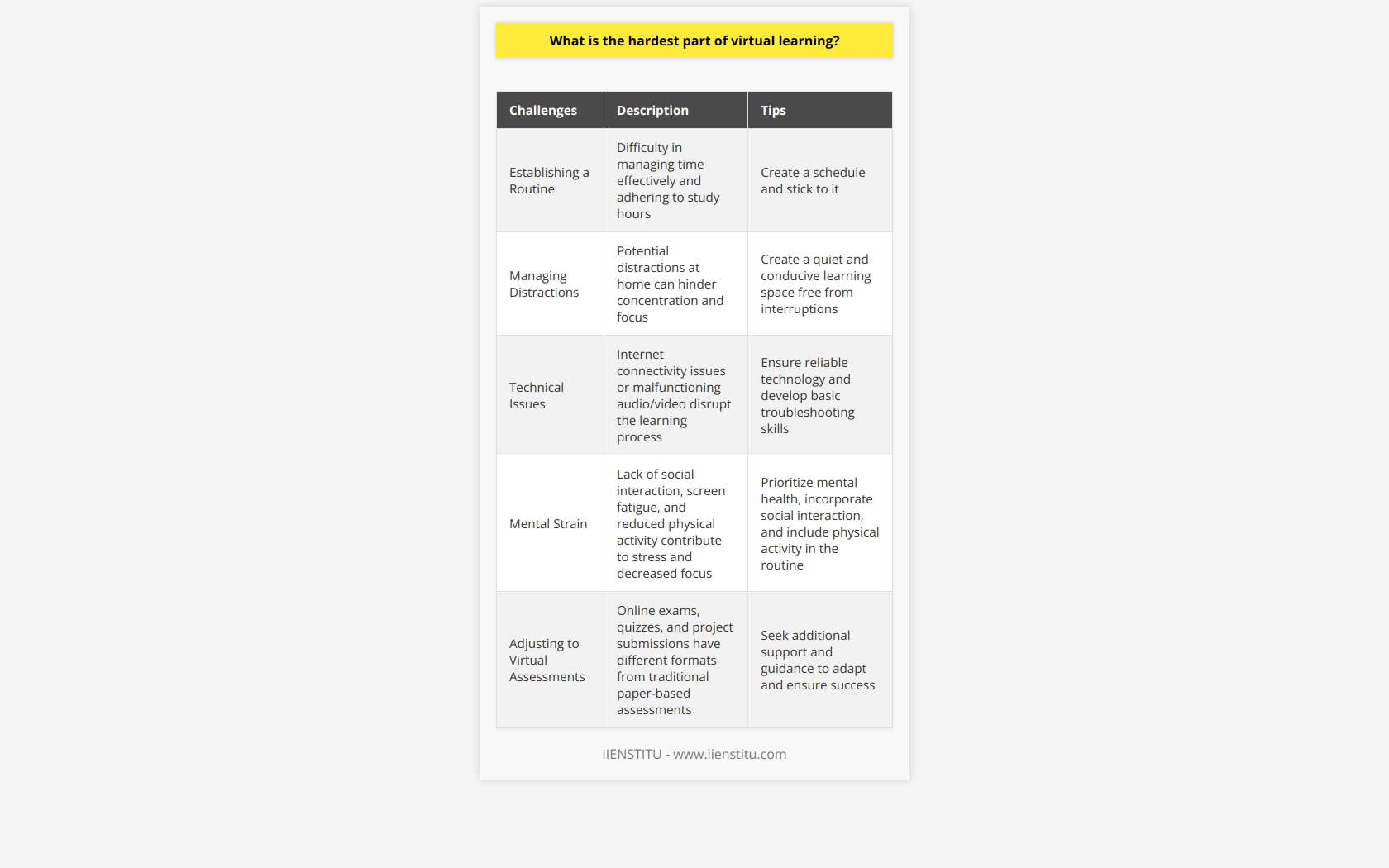
Virtual learning refers to any educational experience online or through a digital platform. This blog post shares tips and advice for making the most of virtual learning experiences. Virtual learning has become increasingly popular in recent years. With the rise in technology, many educational institutions now offer virtual learning options for their students.
The advent of the digital age has revolutionized various sectors, including education. Virtual learning has progressively become an integral part of learning institutions globally. According to Statista, as of 2020, the global e-learning market is projected to surpass 243 billion U.S. dollars by 2025. The uptick is mainly because of transformative tools like virtual learning assistants, which help foster digital learning experiences.
Benefits of Virtual Learning
The advent of e-learning has led to numerous benefits. Under this model, knowledge is accessible, no matter the geographical location. This unlimited access allows individuals to learn at their pace and convenience, even from the comfort of their homes.
Virtual education enables individuals to access extensive educational materials, interact with specialists in various fields, and conduct online evaluations. This form of education is also significantly more affordable than traditional education. The study conducted by Pacific Virtual Learning supports these findings.
Other elements, like the virtual classroom, a common feature in digital education, help replicate the physical learning environment, enhancing students' engagement.
The Imagine Learning Virtual Trainer offers an attractive salary and flexibility. This has attracted many individuals to pursue a career in this field, which has improved the standard of virtual education.
Obstacles of Virtual Learning
Despite its many profound advantages, virtual learning has obstacles. One fundamental challenge lies in the digital divide, the glaring disparity in access to essential technological resources. Some parts of the world still need help with internet access and reliable technology, rendering virtual learning a distant dream.
Additionally, some individuals may need help to stay motivated during online learning. This is especially true when there is no traditional classroom environment.
Nevertheless, it's crucial to remember that these challenges are manageable.
Many organizations, like Pacific Virtual Learning, are working to bridge the digital divide and create inclusive digital learning spaces. They aim to make education more accessible and equal for everyone.
Maintaining motivation in an online classroom can be challenging. However, there are ways to overcome this obstacle. One option is to acquire a virtual learning aide.
Another option is to utilize the assistance provided by a virtual teacher. Both of these options can have a significant impact on maintaining motivation.
Optimizing Virtual Learning Experience
To maximize the advantages of digital education, we need to approach virtual learning correctly. The following suggestions can help unlock its potential benefits.

Establish a Regular Schedule and Adhere to it.
Like regular learning, virtual learning also thrives on establishing a regular schedule.
A structured timeline is essential for maintaining discipline, meeting virtual learning expectations, and managing time efficiently. This is especially true in online learning setups, which can be flexible and ever-changing.
This structure imitates the traditional learning environment, making the transition to eLearning smoother and more effective.
Further, ensure you are following your schedule consistently. It can be tempting to forgo it, especially if a virtual instructor has no direct oversight. However, consistency is critical to successful digital learning.
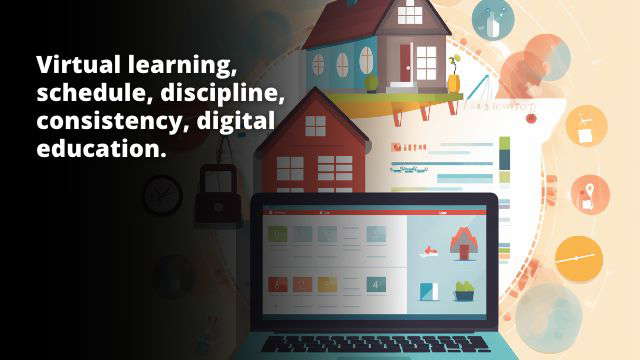
Create a Specific Learning Area
Creating a specific, organized, and quiescent learning area is crucial in a virtual learning environment. An optimal learning space enhances focus and helps delineate learning activities from other household chores. This learning nook becomes your virtual classroom, helping you stay immersed in digital education while minimizing potential distractions.
Leverage Communication Platforms for Constant Connection with Cohorts and Instructors
Regular contact with your teachers and classmates is vital in a virtual learning setup. It becomes essential to familiarize oneself with the various communication tools the learning platform provides.
Regular interactions can enhance your understanding of the subject. Additionally, they can help maintain the social dynamics that traditional learning provides. These interactions can involve clarification or academic discussions.

Being aware of the potential disadvantages of E-Learning
Possessing a deep understanding of the potential pitfalls in e-learning can help streamline the process significantly. Although it sounds counterintuitive, being mindful of the drawbacks can help you strategize better and overcome obstacles swiftly.
Exploit the Unique Opportunities E-Learning Provides
One of the most inspiring aspects of virtual learning is the unique opportunities it offers to its learners. You have access to diverse specialized courses that may not be offered in traditional school settings. The Imagine Learning Virtual Instructor salary and work flexibility also provides opportunities for educational professionals.
Discover Innovative Techniques to Stay Interactive with Education Material
The last tip is discovering innovative methods to stay engaged with the learning materials. Every learner has a unique learning style, and understanding your style can help you interact better with the study materials. Whether by drawing diagrams, incorporating short breaks, or gamification of lessons, identifying your effective learning techniques is crucial. Rather than passively receiving knowledge, it promotes active involvement, marking an essential step in successful eLearning.
In conclusion, the shift towards digital learning is indeed a revolution in education.
Virtual learning can offer an enriching and convenient educational experience. Minor setbacks are not a barrier. The right approach and valuable tips are essential factors.
The future indeed holds promise for this new mode of education.

Frequently Asked Questions
Do you enjoy virtual learning?
As an author and educator, I find virtual learning to bring a fresh perspective to teaching and learning. It offers increased accessibility and flexibility, which I appreciate. However, it's important to note that like any mode of instruction, it comes with its own set of challenges.
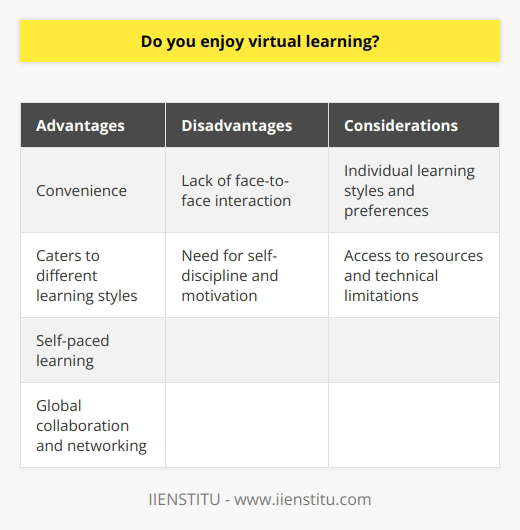
Does virtual learning count?
Absolutely! Virtual learning is a recognized and accredited mode of education. Students engaging in virtual classes receive the same course content as they would in traditional classrooms. Moreover, their progress is tracked and counts toward course credit and degree completion.

How do online schools make virtual learning successful?
Online schools make virtual learning successful through various measures. They provide a structured learning environment, even though it's digital. This includes a clear, consistent schedule, access to resources, and dedicated time for student-instructor interaction. Online schools leverage virtual learning assistants and digital education platforms, making content interactive and engaging.
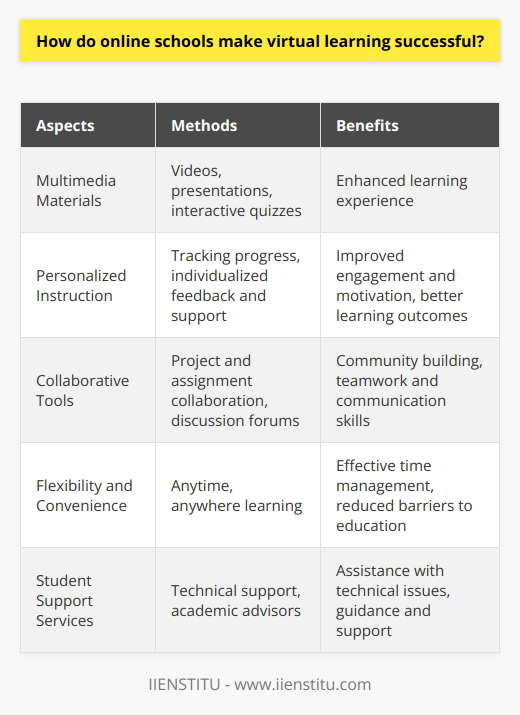
How do teachers feel about virtual learning?
Teachers' feelings about virtual learning can vary greatly. Some educators find it rewarding and appreciate the flexibility it offers to both teachers and students. However, others find the lack of face-to-face interaction challenging and feel the absence of a traditional classroom environment. The disparity in access to technology among students is another concern frequently raised by teachers.

How does technology help you in online learning?
Technology is the cornerstone of online learning. It facilitates all aspects - from delivering lessons via a virtual classroom to submitting assignments digitally. Technology aids in making education accessible to students irrespective of their geographic location. Additionally, tools like virtual learning assistants can enhance student engagement and further individualize learning.
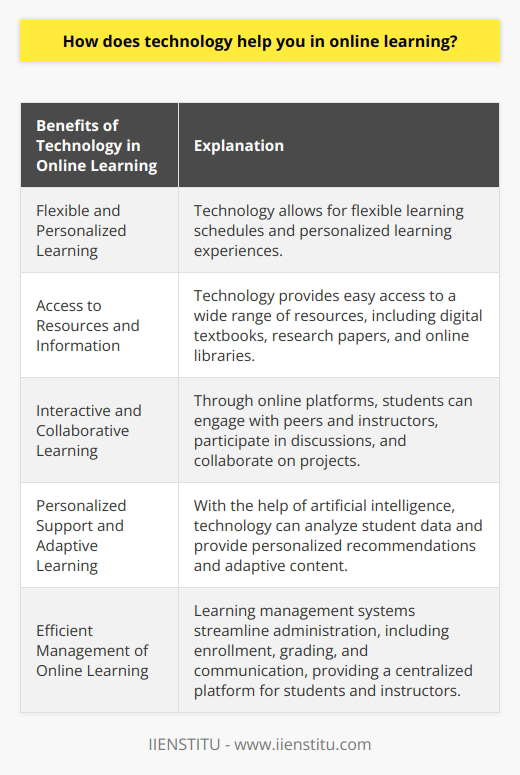
Is virtual learning good or bad?
As with most things, virtual learning has its pros and cons, and labelling it as 'good' or 'bad' oversimplifies it.
Virtual learning can offer greater flexibility, accessibility, and the convenience of learning at one's own pace. However, it also presents challenges such as potential lack of access to resources, limited social interactions and a higher need for self-discipline and motivation.

How do we maximize virtual mode of learning?
Strategic Planning
Maximizing virtual learning requires strategic planning. Clear learning objectives should be defined at the onset. Outlines should be well-structured to ensure students understand expectations and learning paths.
Interactive Content
Interactive content is key in online learning. Creating learning materials such as quizzes, simulations or interactive videos keep students engaged. Increase the application of knowledge by replacing passive learning with interactive content.
Utilization of Technology
Harness the power of technology. A variety of digital tools exist to enhance online learning. Employ these in teaching methods to raise involvement and improve student achievement.
Efficient Communication
Efficient communication enriches virtual learning. Creating channels for streamlined communication, such as online forums or chat groups, assures students their inquiries won't be ignored. Feedback is vital, giving students insight into their progress, clarifying misconceptions, and encouraging improvement.
Collaborative Learning
Facilitate peer-to-peer interaction. Establishing online learning groups promotes a sense of community. Collaboration, exchange of ideas, and cooperation are enhanced in group activities, pushing students to learn from each other.
Regular Assessments
Include periodic assessments. Regular quizzes or feedback loops foster continuity in virtual learning. They not only measure but also consolidate student learning. Through these assessments, gaps in understanding can be identified and addressed promptly.
Ease of Access
Ensure easy access to learning materials. Create a user-friendly virtual environment that all students can navigate with ease. Reducing technical difficulties helps maintain student engagement and satisfaction in the learning process.
By adopting these tactics, we can maximize the benefits of virtual learning. They can help provide a conducive and fruitful learning environment, even in the virtual space.
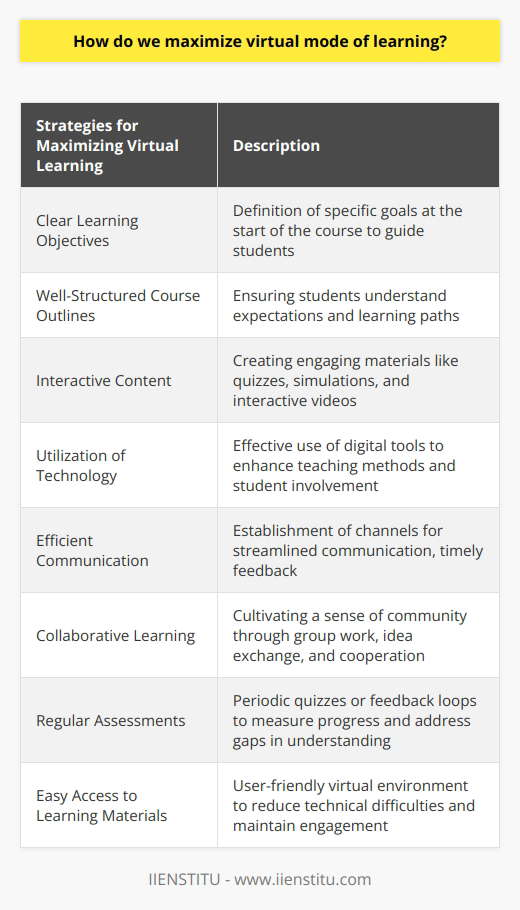
What strategies are effective for maximizing engagement in virtual classes?
Strategies for Engagement in Virtual Classes
Active Learning Approach
This approach encourages active participation from learners, as opposed to passive absorption of content. It involves the learner in the educational process. This may involve problem-solving activities, group discussions, and real-world examples. It keeps the learner engaged, builds intellectual agility, and promotes practical understanding.
Interactive Learning Environment
Creating an interactive learning environment is key. Leveraging digital tools can foster this. Interactive whiteboards, live polls, breakout rooms, Q&A sessions, and shared files are examples of engagement tools. They allow students to participate actively and collaboratively.
Learner-centric Content
Learner-centric content makes learning enjoyable and relevant. The approach entails tailoring course content, delivery, and assessment techniques to the specific needs and interests of the learner. It could involve using multimedia content, storytelling, or gamifying course material.
Feedback and Recognition
Feedback serves as a tool for engagement. Regular constructive feedback motivates learners to actively participate. Additionally, recognising learners’ efforts or achievements, either individually or publicly, boosts learner engagement.
Adaptation to Pace of Learning
Different learners have different learning paces. Customizable learning pathways cater to such individual needs. They help to maximize engagement by making the learners feel understood and valued. Using tools that allow learners to revise previous lessons at their convenience also aids in engagement.
Connection and Empathy
Establishing a connection with learners is crucial for their engagement. Showing care for their well-being, understanding their struggles, and appreciating their efforts can foster a sense of community. It helps learners feel comfortable and open to engage more in virtual classes.
In conclusion, maximizing engagement in virtual classes requires a blend of several strategies. They range from the use of engagement tools to creating an emotional connection with the learners. The key is to strive for a learner-centric approach in designing and delivering the virtual classes.

What is the hardest part of virtual learning?
Exploring Challenges in Virtual Learning
Difficulty in Establishing Routine
The hardest part of virtual learning involves establishing a routine. Online classes provide a lot of flexibility, which can lead to lack of structure, causing difficulty in managing time and adhering to set study hours.
Managing Distractions at Home
Home environment, loaded with possible distractions, poses another challenge. In traditional classrooms, students have a controlled environment. At home, students need to create and enforce a quiet and conducive learning space, which could prove to be tricky.
Technical Issues
Virtual learning also requires a reliable technology setup. Issues with internet connectivity or malfunctioning of audio or video could disrupt the learning process. Students might also not be technologically savvy enough to troubleshoot certain issues.
The Mental Strain
Lastly, the psychological impact of virtual learning shouldn't be overlooked. The lack of social interaction, screen fatigue, and reduced physical activity could lead to mental stress, causing decreased focus and academic performance.
Adjusting to Virtual Assessments
Virtual learning also means virtual assessments. Students might find it difficult to adjust to online exams, quizzes, and submission of projects, which are often different in format from traditional paper-based assessments.
In summary, virtual learning comes with significant challenges. Maintaining a routine and managing distractions requires discipline and self-control. Reliable technology is crucial, and addressing the mental strain is paramount. Finally, adjusting to a different assessment methodology is another hurdle to consider.
